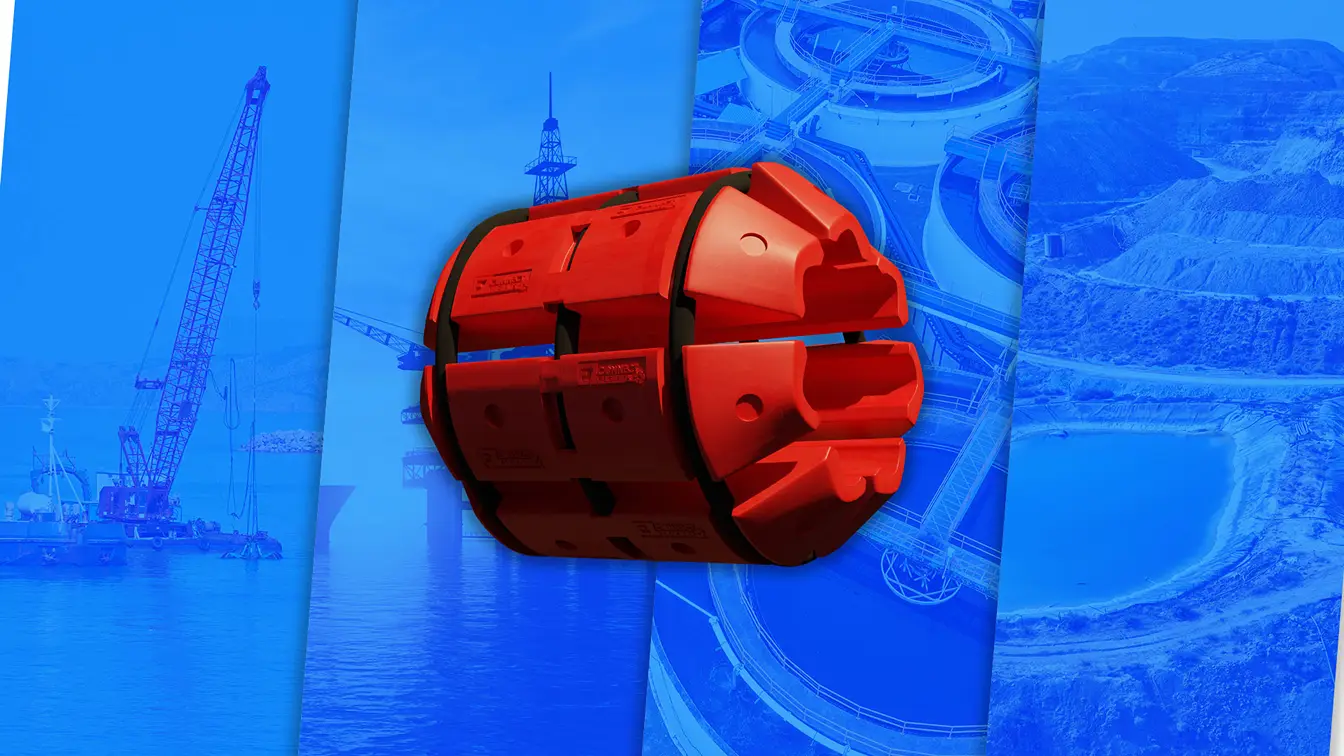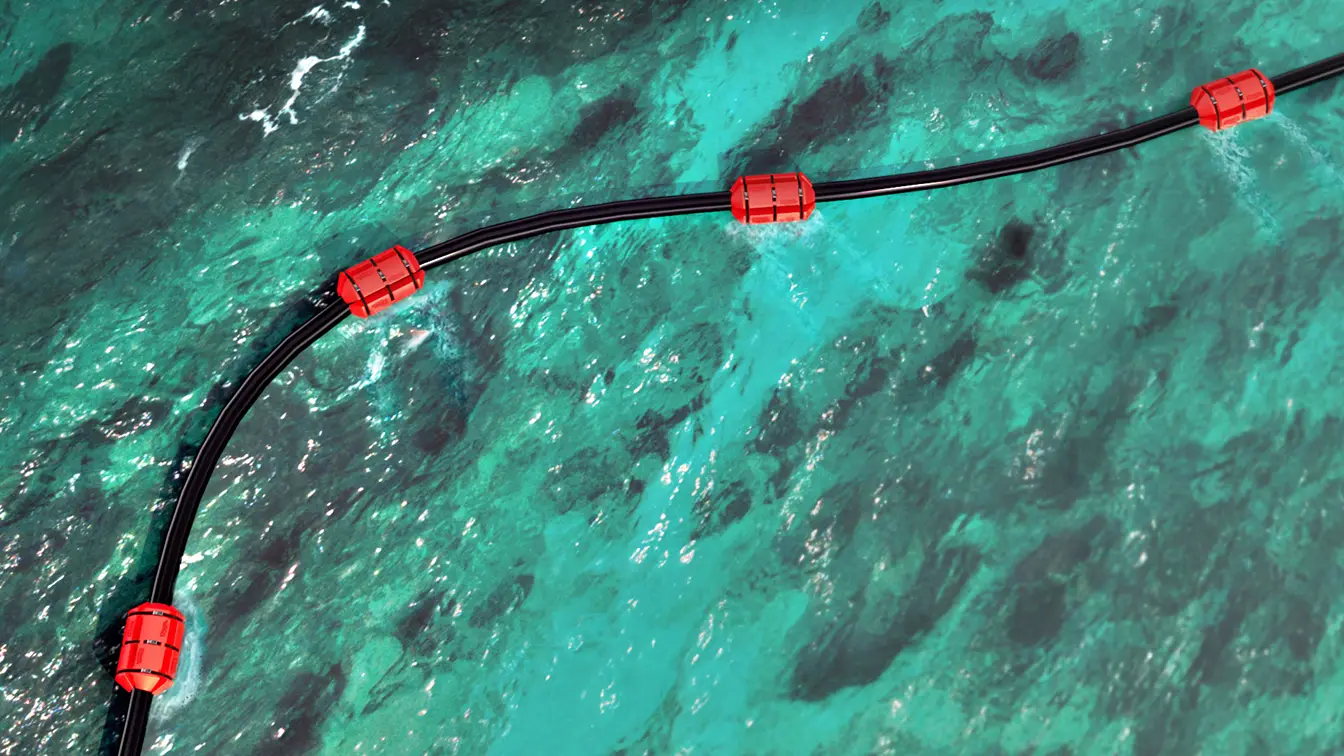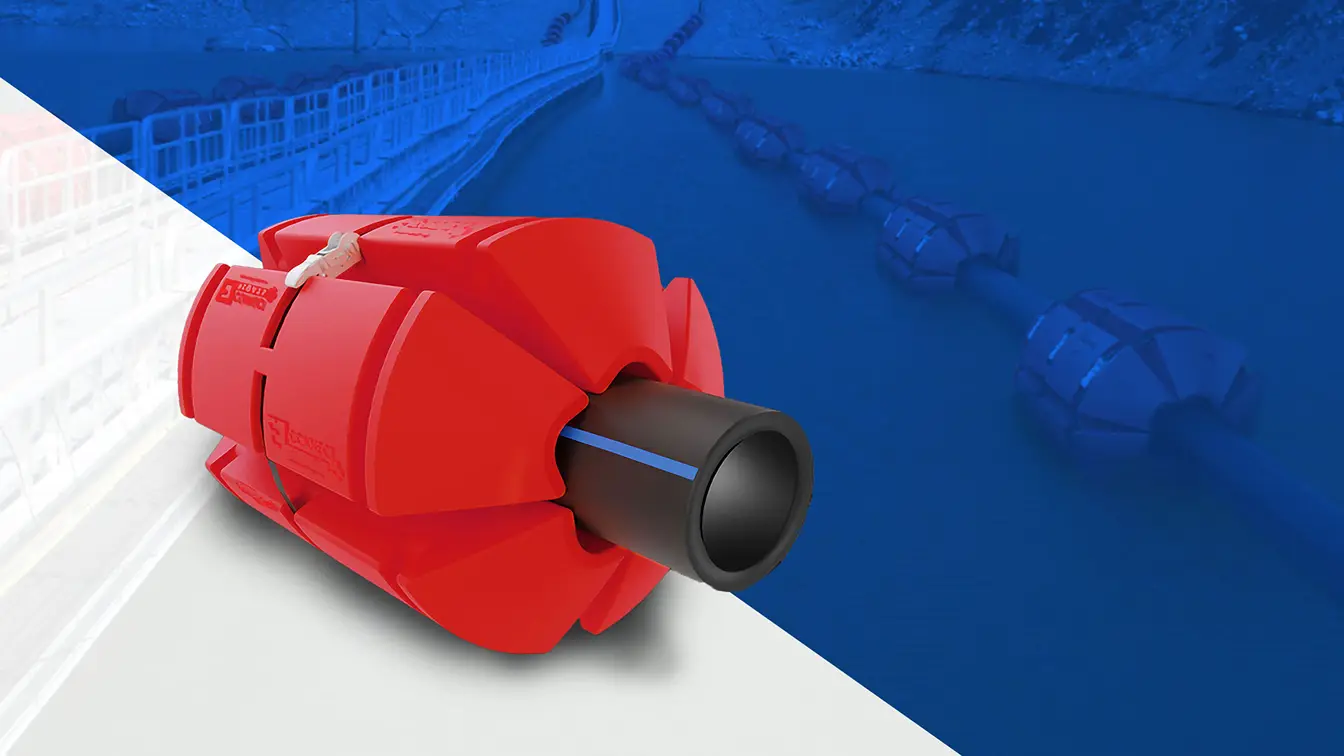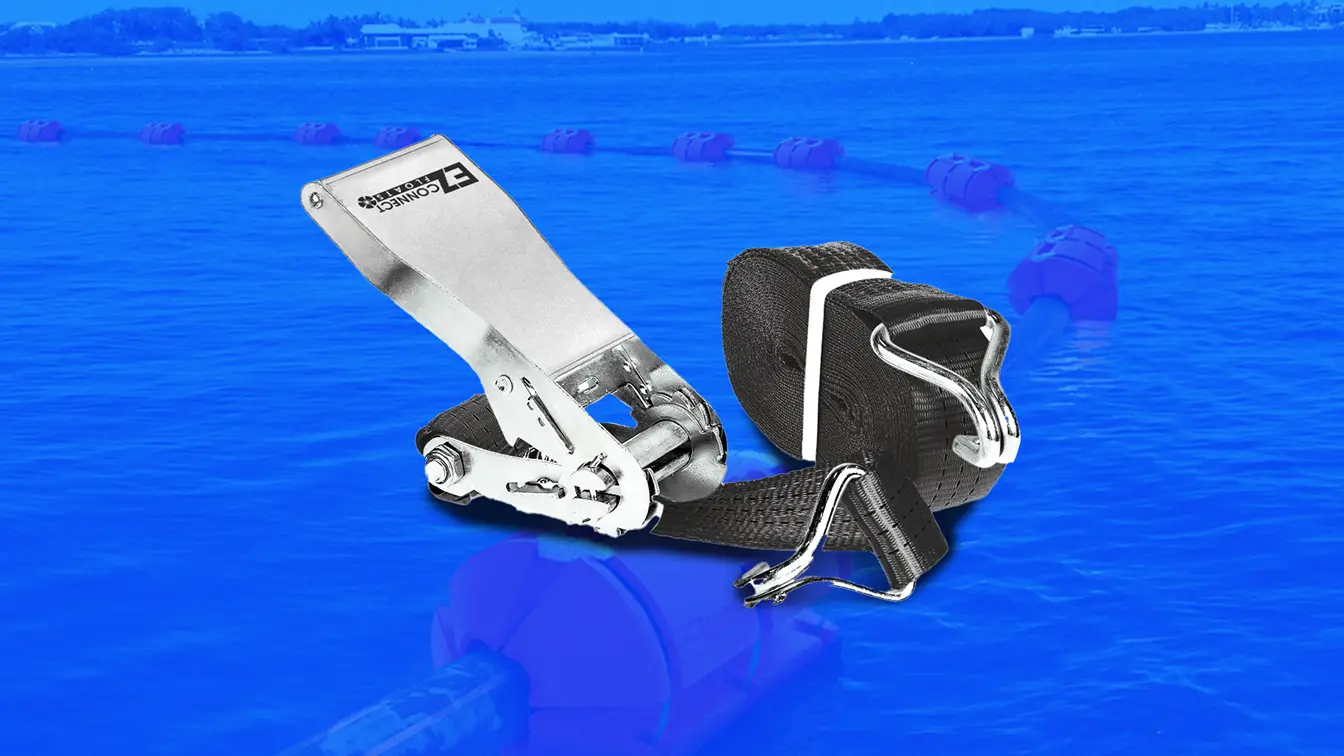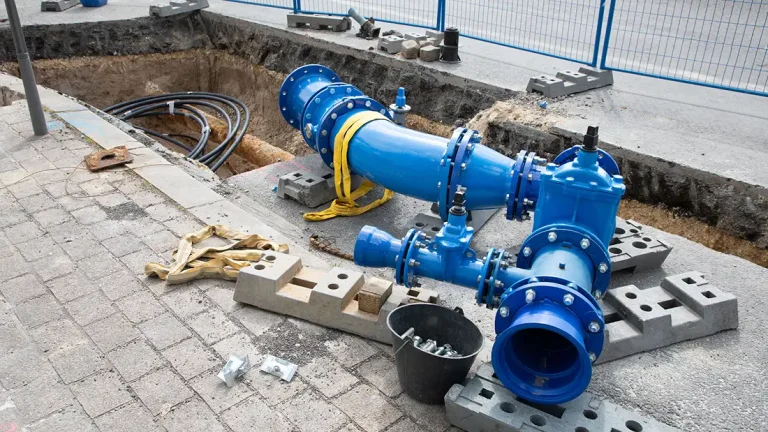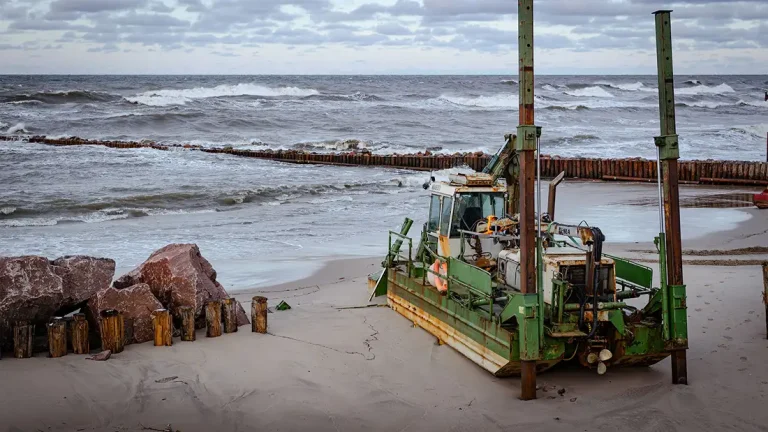Importance of Floatation Solutions
The stability and effectiveness of floatation solutions are crucial in industrial applications. These solutions support the transportation and operation of pipes and hoses across various sectors, ensuring they remain buoyant and functional even in challenging environments.
Overview of Conventional Methods and Ratchet Strap Technology
Conventional floatation methods have long been the standard, using foam, plastic, and metal materials to create buoyant supports. However, ratchet strap technology has brought a new level of security and ease to floatation solutions, promising enhanced performance and reliability.
Purpose of the Blog
This blog aims to compare conventional floatation methods with ratchet straps, focusing on their effectiveness, ease of use, and overall benefits. By understanding these differences, industries can decide which method best suits their needs.
Overview of Conventional Floatation Methods
Description of Traditional Floatation Devices and Techniques
Conventional floatation devices typically include cylindrical or rectangular floats made from materials like foam or plastic. These floats are attached to pipes and hoses using ropes, chains, or custom brackets, providing the necessary buoyancy to keep them afloat.
Common Materials and Designs
Traditional floatation methods often utilize materials known for their buoyancy and durability, such as:
- Foam: Lightweight and buoyant but can degrade over time.
- Plastic: Durable and resistant to chemicals but may require complex attachment mechanisms.
- Metal: Strong and reliable but heavier and more prone to corrosion.
Typical Applications and Industries
Industries that commonly rely on conventional floatation methods include:
- Dredging and Marine Construction: Ensuring the stability of pipes and hoses in marine environments.
- Oil and Gas: Supporting pipelines in offshore and onshore operations.
- Water Treatment: Maintaining the position of hoses in water treatment facilities.
- Mining and Mineral Processing: Keeping slurry and water transport systems operational.
Introduction to Ratchet Straps for Pipe and Hose Floats
Explanation of Ratchet Strap Technology
Ratchet straps consist of high-strength webbing and a ratchet mechanism for precise tension adjustment. This ensures a tight and secure fit around pipes and hoses, providing reliable floatation support.
Key Features and Components of Ratchet Straps for Pipe and Hose Floats
Ratchet straps have revolutionized how floatation devices are secured to pipes and hoses in various industrial applications. Below is an in-depth look at the key features and components that make ratchet straps an advanced and reliable option for floatation solutions.
High Tensile Strength
Ratchet straps are constructed from high-strength materials, typically polyester webbing, which provides exceptional tensile strength. This strength ensures the straps can handle heavy loads and maintain their integrity under significant stress. The high tensile strength of the webbing makes ratchet straps suitable for securing large pipes and hoses, even in demanding environments.
Adjustability
One of the standout features of ratchet straps is their adjustability. The ratchet mechanism allows for precise tension adjustment, ensuring a tight and secure fit around the pipes or hoses. This adjustability means that the straps can accommodate various pipe and hose diameters, providing a versatile solution that can be adapted to different needs and applications. The ability to fine-tune the tension also enhances the overall stability and security of the floatation device.
Corrosion Resistance
Ratchet straps are designed to withstand harsh environmental conditions, including exposure to water, chemicals, and UV light. The materials used in constructing ratchet straps, such as stainless steel or coated metals for the ratchet mechanism and UV-resistant webbing, are chosen for their corrosion-resistant properties. This ensures that the straps maintain functionality and longevity even in corrosive environments, such as marine and offshore operations.
Ease of Use
The ratchet mechanism is designed for user-friendliness, allowing for quick and easy installation and adjustment. Securing a floatation device with ratchet straps involves wrapping the strap around the pipe or hose, threading it through the ratchet mechanism, and using the ratchet to tighten the belt to the desired tension. This simple, tool-free process reduces installation time and labor costs, making ratchet straps an efficient choice for industrial applications.
Reusability
Ratchet straps are reusable, unlike traditional floatation methods requiring single-use components. Their durable materials and robust construction allow them to be used multiple times without significant wear and tear. This reusability makes ratchet straps a cost-effective option and aligns with sustainability practices by reducing waste.
Safety Features
Safety is a paramount concern in industrial applications, and ratchet straps are designed with several safety features to ensure reliable performance. These include:
- Locking Mechanism: The ratchet mechanism locks securely, preventing accidental loosening or slipping.
- Reinforced Stitching: The webbing often features reinforced stitching at critical points to enhance strength and prevent fraying.
- Break Strength Ratings: Ratchet straps are rated for their break strength, indicating the maximum load they can safely handle. This helps users select the appropriate strap for their specific needs.
Versatile Applications
Ratchet straps can be used in many applications beyond floatation devices. Their versatility makes them suitable for securing cargo, bundling materials, and other industrial tasks. This broad range of applications underscores the adaptability and utility of ratchet straps in different settings.
Components of Ratchet Straps
Ratchet straps consist of several key components, each contributing to their overall functionality and reliability:
- Webbing: The primary component of the strap is made from high-strength polyester or other durable materials. The webbing provides the tensile strength needed to secure heavy loads.
- Ratchet Mechanism: This is the device used to adjust the tension of the strap. It consists of a handle, a ratcheting gear, and a locking mechanism. The handle allows easy tightening, while the gear and lock ensure the strap stays secure.
- Hooks/End Fittings: The ends of the strap often feature hooks or other fittings designed to attach securely to the pipe, hose, or other anchor points. These end fittings are typically made from metal and are designed to withstand high loads.
- Labeling and Markings: Ratchet straps often come with labels or markings indicating their load capacity, break strength, and other vital specifications. This information is crucial for ensuring the straps are used safely and appropriately.
Combining these features and components, ratchet straps offer a superior solution for securing pipe and hose floatation devices in industrial applications. Their high tensile strength, adjustability, corrosion resistance, ease of use, reusability, safety features, and versatile applications make them a preferred choice over traditional methods.
Overview of Industries Adopting This Technology
Industries that are beginning to adopt ratchet strap technology include:
- Marine and Offshore Operations: For secure and efficient pipeline floatation.
- Water Management: In applications where quick adjustments are necessary.
- Industrial and Construction: Where durability and ease of use are paramount.
Comparative Analysis: Key Factors
Security and Stability
Conventional Methods:
- Attachment Security: Rely on ropes, chains, or brackets, which can loosen over time.
- Impact on Stability: Less secure attachments can lead to instability, affecting operational efficiency and safety.
Ratchet Straps:
- Attachment Security: Ratchet mechanisms ensure a tight and secure fit, reducing the risk of loosening.
- Impact on Stability: Enhanced stability leads to better operational performance and reduced safety risks.
Ease of Installation and Use
Conventional Methods:
- Installation Process: Typically involves manual tying or fastening with tools, which can be time-consuming.
- User-Friendliness: Adjustments can be complex, especially in challenging environments.
Ratchet Straps:
- Installation Process: Quick and easy, with the ratchet mechanism allowing for precise adjustments.
- User-Friendliness: Designed for ease of use, saving time, and reducing labor costs.
Durability and Longevity
Conventional Methods:
- Materials Used: Often prone to degradation from UV light, chemicals, and physical wear.
- Lifespan and Maintenance: Frequent inspections and replacements are common, leading to higher maintenance costs.
Ratchet Straps:
- Materials Used: Made from durable, corrosion-resistant materials.
- Lifespan and Maintenance: Longer lifespan and reduced maintenance requirements due to high-quality construction.
Versatility and Adaptability
Conventional Methods:
- Adaptability: Limited design flexibility makes it harder to fit different pipe and hose sizes.
- Examples of Applications: Suitable for specific, consistent environments but less adaptable to changing conditions.
Ratchet Straps:
- Adaptability: Highly versatile, easily adjustable to different pipe and hose sizes and shapes.
- Examples of Applications: Suitable for various applications, providing flexibility in different industrial settings.
Cost-Effectiveness
Conventional Methods:
- Initial Costs: Often lower, but long-term expenses can accumulate due to maintenance and replacements.
- Total Cost of Ownership: Higher operational costs if instability leads to downtime or equipment damage.
Ratchet Straps:
- Initial Costs: These may be higher, but long-term savings are realized through reduced maintenance and increased lifespan.
- Total Cost of Ownership: Lower overall costs with fewer replacements and less downtime.
Pros and Cons Summary
Conventional Methods
Pros:
- Established and widely used
- Initially lower cost
- Various materials and designs are available
Cons:
- Prone to loosening and instability
- Time-consuming installation and adjustments
- Higher long-term maintenance costs
Ratchet Straps
Pros:
- Secure and stable attachment
- Quick and easy installation
- Durable and long-lasting
- Versatile and adaptable
- Cost-effective in the long term
Cons:
- Higher initial cost
Conclusion
Recap of Key Points
This comparison highlights the advantages and disadvantages of conventional floatation methods and ratchet strap technology. Ratchet straps offer significant improvements in security, ease of use, durability, versatility, and cost-effectiveness.
Final Thoughts on Effectiveness
While conventional methods have served industries well, ratchet straps provide a modern, reliable alternative to enhance operational efficiency and safety. Their enhanced security and stability reduce the risk of equipment failure and downtime.
Recommendations for Industries
Industries looking to improve their floatation solutions should consider adopting ratchet strap technology. The benefits, such as reduced maintenance, increased lifespan, and overall cost-effectiveness, make ratchet straps a compelling choice for modern industrial applications.


